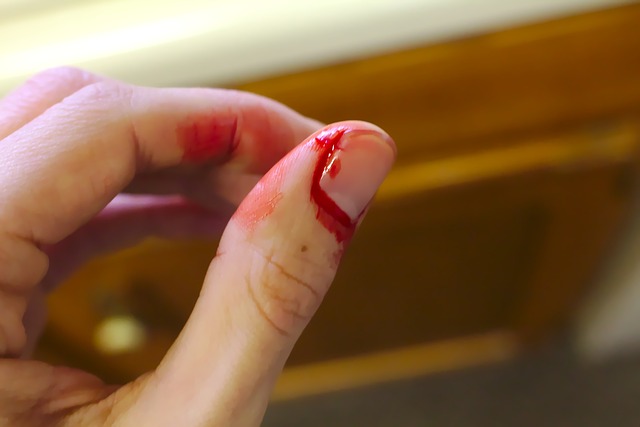Cuts from a sharp knife or a piece of glass are very common. They often occur while people are preparing food, washing dishes or even crafting. All it takes is a slip of the knife or a dish breaking, and suddenly there’s blood. However, while these types of cuts are startling, most can be safety treated at home, according to dermatologists from the American Academy of Dermatology.

“The most important thing to do is to gently wash the cut to prevent an infection,” said board-certified dermatologist Laura K. Ferris, MD, PhD, FAAD, an associate professor of dermatology at the University of Pittsburgh Medical Center. “Beyond that, most minor cuts and scrapes stop bleeding and heal quickly with a few simple steps.”
To treat a minor cut, Dr. Ferris recommends the following tips:
- Wash your hands with soap and water.
- Wash the cut to prevent infection. Use cool or lukewarm water and a mild soap or cleanser to gently remove dirt or debris.
- Stop the bleeding. Apply pressure to the cut using a clean washcloth or gauze. Maintain pressure for one to two minutes or until the bleeding stops.
- Apply petroleum jelly. This will help keep the wound moist for faster healing. Make sure you apply it continuously until the cut heals. To help prevent the spread of dirt and bacteria, consider using petroleum jelly from a tube instead of a jar. Do not apply topical antibiotics.
- Cover the cut with a sterile bandage. This will help protect the cut and prevent it from reopening. Change the bandage daily, and keep the cut covered until it heals.
- Consider taking over-the-counter pain medication. Acetaminophen can help relieve painful cuts.
- Make sure your tetanus vaccination is up to date if your cut is from a dirty or rusty object. If you aren’t sure, contact your primary care doctor.

“Most minor cuts heal in one week or less; however, if your cut is longer than three-fourths of an inch, more than a quarter inch deep, or won’t stop bleeding, seek immediate medical attention,” said Dr. Ferris. “As your cut heals, if you notice any signs of an infection, such as pus or increased redness, swelling or pain, call your primary care doctor or a board-certified dermatologist.”
These tips are demonstrated in “How to Treat Minor Cuts,” a video posted to the AAD website and YouTube channel. This video is part of the AAD’s “Video of the Month” series, which offers tips people can use to properly care for their skin, hair and nails. A new video in the series posts to the AAD website and YouTube channel each month.
About the AAD
Headquartered in Rosemont, Ill., the American Academy of Dermatology, founded in 1938, is the largest, most influential, and most representative of all dermatologic associations. With a membership of more than 19,000 physicians worldwide, the AAD is committed to: advancing the diagnosis and medical, surgical and cosmetic treatment of the skin, hair and nails; advocating high standards in clinical practice, education, and research in dermatology; and supporting and enhancing patient care for a lifetime of healthier skin, hair and nails. For more information, contact the AAD at (888) 462-DERM (3376) or aad.org. Follow the AAD on Facebook (American Academy of Dermatology), Twitter (@AADskin), or YouTube(AcademyofDermatology).




